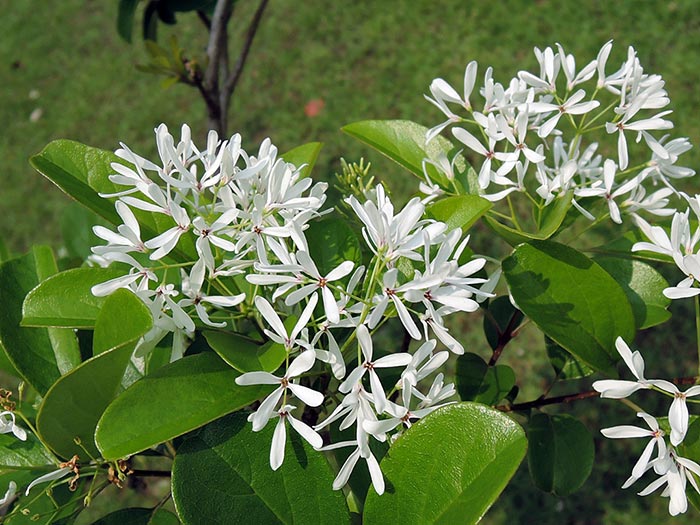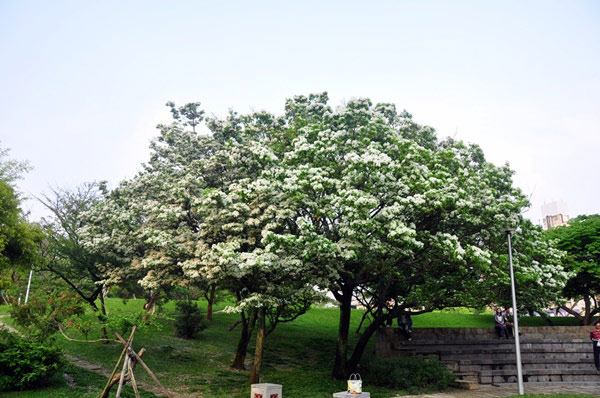Chionanthus retusus
The genus name Chionanthus of Chinese fringetree is a combination of the Greek words chion (snow) and anthos (flower), meaning a flower as white as snow. The white flowers of this plant are delicate and lovely, and the blooms are large and often spectacular during the season.
The Chinese fringetree are found in China, Korea, Japan and Taiwan. In Taiwan, during the Japanese colonial period, there were records in Xianjiaoshi in Hsinchu and Jiaobanshan in Taoyuan, but they were not found for a long time, so they were once thought to be extinct in the wild in Taiwan, until new distributions were found in the Linkou Terrace and Nankan area in Taoyuan, where they were found to be sparsely scattered, remaining on the slopes of terraces or on steep cliffs. Nowadays, the Chinese fringetrees are planted in many parks and private gardens in Taiwan, mainly in the northern metropolitan area, and there are famous trees on campus of the National Taiwan University and the 228 Peace Memorial Park. In the central region, large numbers of the Chinese fringetrees began to be planted around the year 2000. The museum has the largest number of the Chinese fringetrees in Taichung and the longest history of planting, with the tallest and most luxuriant plants, which attract many tourists to visit and enjoy the flowers in blossom every spring.
The Chinese fringetree is a deciduous tree, and the trees planted by the museum shed their leaves after December every year, and new shoots sprout around February of the following year. They bloom twice a year, once in April, which is the main blooming period, and when it blooms, it looks as if snow has fallen on the tree, making it a spectacular sight. Visitors often gather to take photos of the large tree next to the Space Theater. In the Botanical Garden they are planted mainly in the Northern Lowland Area around the great lawn, which is also the focus of visitors' attention when in bloom. In recent years, a row of these trees has been planted on the sidewalk along Xitun Road, enhancing the diversity of the outdoor scenery of the museum.

